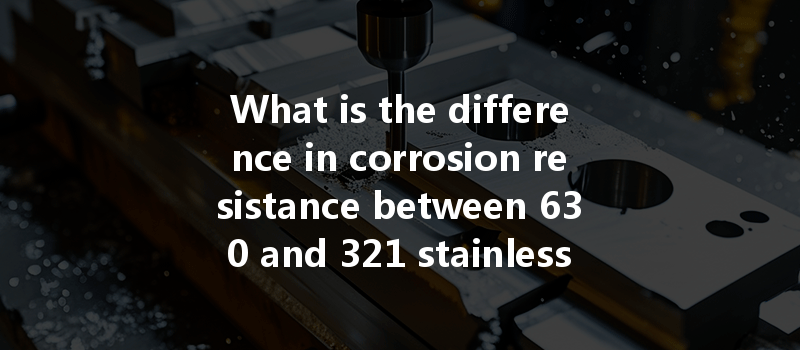Opening: An Eye-Opening Statistic on Stainless Steel Corrosion
Did you know that over 150 million tons of stainless steel are produced globally every year? Among the multitude of stainless steel grades available, 630 and 321 stainless steel are two particularly significant varieties, especially when it comes to their applications in CNC machining. Interestingly, while both grades belong to the family of stainless steels, their corrosion resistance properties can sharply differ, leading to significant implications in a range of industries, including aerospace, automotive, and manufacturing.
As companies strive to choose the right materials for their CNC machining projects, understanding these differences becomes paramount. In this extensive blog, we will delve deep into the corrosion resistance properties, applications, and implications of opting for 630 or 321 stainless steel in CNC machining.
Understanding Stainless Steel in CNC Machining
Before we embark on analyzing the specific grades, it’s vital to understand why stainless steel is the material of choice for many industries. Stainless steel boasts exceptional durability, strength, and resistance to rust and corrosion. This makes it highly effective in environments that may expose it to moisture and aggressive chemicals.
The differences in corrosion resistance between various grades of stainless steel arise due to their unique chemical compositions, which ultimately influence their physical properties.
The Basics: Chemical Composition of 630 and 321 Stainless Steel
630 Stainless Steel:
321 Stainless Steel:
Comparing Corrosion Resistance
Corrosion Resistance of 630 Stainless Steel
630 stainless steel exhibits good corrosion resistance but is not as robust as its austenitic counterparts. Due to its martensitic structure, 630 is susceptible to stress corrosion cracking in chloride environments. This makes it suitable for applications in mildly corrosive environments but requires careful consideration when exposed to harsher conditions.
Corrosion Resistance of 321 Stainless Steel
On the other hand, 321 stainless steel’s resistance to corrosion is significantly enhanced, particularly in high-temperature settings. The inclusion of titanium acts as a stabilizer to inhibit intergranular corrosion, providing longer service life and reliability under extreme conditions.
Importance of Corrosion Resistance in CNC Machining
In CNC machining, the selection of the right stainless steel grade based on corrosion resistance is not merely a matter of convenience; it has significant implications for the longevity of the parts produced, maintenance costs, and operational safety.

Choosing the wrong grade can lead to premature failures, increased downtimes, and costly replacements, which can impact the overall productivity of a manufacturing line. The right material choice contributes to efficient operations, safety, and overall cost-effectiveness, which is why understanding the distinctions between 630 and 321 stainless steels in corrosion resistance is critical.
Selection Criteria for CNC Machining: 630 vs. 321
When determining which stainless steel to use for CNC machining, several factors come into play:
The CNC Machining Process: Factors Affecting Material Choice
Implications of Material Selection on Lifetime and Maintenance
Particularly when it comes to high-stakes applications, the implications of material selection go beyond the production floor. For instance, choosing 321 stainless steel, with its superior resistance to high temperatures and corrosive media, can lead to reduced maintenance costs over its lifetime. This contrasts with 630 stainless steel, which, while strong, may incur higher overall costs due to potential premature failures in corrosive settings.
Lifecycle Analysis: It’s important to conduct a lifecycle assessment (LCA) to evaluate not only the upfront material costs but also the long-term operational costs. This becomes crucial when making a decision between 630 and 321 stainless steel.
: A Critical Decision in CNC Machining
In conclusion, when deciding between 630 and 321 stainless steel for CNC machining applications, understanding the nuances of their corrosion resistance can prove invaluable. While 630 stainless steel excels in strength and heat treatment capabilities, 321 stainless steel offers superior performance in high-temperature and more corrosive conditions, making it a suitable choice for demanding environments.
As industries continue to evolve with higher demands for quality and durability in machined components, making informed decisions about materials is paramount.
This blog emphasizes the complexity and importance of material selection in CNC machining. Given the potential consequences of corrosion-related failures, it’s imperative for stakeholders to put serious thought into which grade of stainless steel to choose for their applications.
As always, the key takeaway lies in thorough research, understanding environmental factors, and evaluating not just the initial costs but also the long-term implications of material choice in CNC machining. By doing so, companies can ensure operational efficiency, safety, and sustainability in their manufacturing processes.
Why Is This Important?
Choosing the appropriate stainless steel grade is more than just a technical decision—it is a matter of strategic importance that can impact a business’s bottom line. As you ponder your next CNC machining project, take the time to consider these insights on corrosion resistance, and don’t underestimate the value of informed material selection.
—






